Navigating Workplace Conflict
Building Stronger Relationships
Welcome to our blog series on common job hazards. In this article, we’re diving into one prevalent psychosocial hazard that impacts us all – conflict or poor workplace relationships and interactions.
We will shed light on this workplace challenge, showing you where to start on the symptoms, and explore how you can foster healthier workplace dynamics through effective intervention and ongoing support.
Conflict or poor workplace relationships and interactions
Definition: Poor workplace relationships or interpersonal conflict can occur between managers, supervisors, co-workers or others.
Example: Rude comments between managers, supervisors, co-workers and others; unresolved conflict regarding work tasks, processes, customers, or other interpersonal issues.
Understanding Hazard Complexity
Workplace hazards can often interact in unexpected ways, making them a puzzle to solve. Conflict or poor relationships among colleagues can manifest in various forms, from subtle tensions to more overt issues.
But how do you even begin to address these complexities?
We’ll show you where to start and provide insights into recognising workplace symptoms.

The Power of Early Proactive Actions
Early intervention plays a pivotal role. We all know that prevention is better than finding a cure, and that’s especially true when it comes to workplace dynamics. Addressing incivility and informal complaints in their early stages can prevent them from turning into more serious problems like bullying, grievances, or formal complaints.
Incivility is often a pre-curser to workplace bullying and is important to address early, to reduce the likelihood of interpersonal tensions escalating.
Workplace incivility can be defined as, “behaviour that is low-intensity, unclearly harmful, violating mutual respect norms at work, marked by rudeness, disrespect, and disregard for others. It includes ignoring, excluding, demeaning language, interruptions, not listening, and unsociable attitudes. Its subtle nature can foster a toxic environment, reducing job satisfaction, raising stress, and lowering productivity (Andersson & Pearson, 1999)”.
Examples involve non verbals such as eye rolling, not greeting others, unkind comments, and ignoring people.
1. Leadership Support
Supportive leadership is key to enhancing workplace relationships. Leaders who adopt a transformational style, which emphasises inspiring and motivating their teams, play a crucial role in improving relationships and performance. By going beyond mere procedural adherence and offering genuine support and understanding, these leaders can effectively address and mitigate various workplace challenges, preventing conflicts and fostering a healthier work environment. Supportive leaders also will intervene early and authentically when problems in teams occur to reduce the risk of interpersonal issues.
Transformational Leadership: Leaders who inspire and motivate their teams often see improved relationships and performance. This is one of many characteristics of leadership, a group process, that can achieve increased support for their team members and helps to reduce the impact of stressors experienced in their workplace (also knowns as a “protective factor”).
2. Promotion of Psychological Safety in Teams and across Organisations
Psychological safety is a term researched extensively by Professor Amy Edmonston.
It is defined as “the belief in the safety of taking interpersonal risks in team settings. It exists when members can freely express ideas, concerns, admit errors, and suggest innovations without fear of ridicule or punishment. It is a key aspect in promoting team innovation, learning, and performance. Teams with high psychological safety engage more in productive collaboration, learn from failures, and achieve shared objectives” (Edmondson, 1999; 2018).
This involves creating an environment where employees feel included, can learn, contribute, and challenge the status quo without fear of repercussions. This is achieved through:
- Inclusion Safety
- Learner Safety
- Contributor Safety
- Challenger Safety

4 Stages of Psychological Safety
1. Inclusion Safety: Embracing every individual by valuing and accepting them for who they are.
For example, a team leader makes a conscious effort to learn about cultural differences and ensures all team meetings are scheduled at times that are inclusive for team members across different time zones. Additionally, the leader regularly checks in with each team member to understand their unique perspectives and contributions, emphasising that each voice is critical to the team’s success.
2. Learner Safety: Questions are comfortably asked, and individuals feel safe to experiment by trying new things.
For example, a company implements a continuous improvement policy for mistakes and instead of blaming, encourages a debriefing session where teams can discuss what went wrong, what was learned, and how to improve in the future. This practice ensures that individuals feel comfortable admitting mistakes and learning from them without fear of punishment.
3. Collaborator Safety: Environment that fosters constructive debate and provides for a constant and perpetual state of open dialogue.
For example, during project meetings, a facilitator ensures that everyone has a chance to speak and present their ideas. The team has established ground rules for respectful communication and constructive feedback, ensuring that debates are focused on ideas and solutions rather than personal criticisms.
4. Challenger Safety: Feeling safety to challenge the status quo and to do so with immunity from repercussions or reprisal.
For example, a team encourages innovation, thinking critically around new ideas and solutions. Open review and discussion would enable employees who ideas are implemented with recognition and reward. Also fostering an innovative environment will encourage constructive criticism about how things can be improved without fear of reprisal.
Clark, T. R. (2020). The 4 stages of psychological safety: Defining the path to inclusion and innovation. Berrett-Koehler Publishers.
3. Psychosocial Hazard Intervention: Employee Participation/Consultation
Enter Psychosocial Hazard intervention – a proactive approach to managing workplace health and safety under the Workplace Health and Safety Act. Through employee consultation and the application of compliance and the guidelines for managing psychosocial hazards (the Code), we aim to create a supportive and compliant work environment.
Encouraging open dialogue and active participation from employees ensures a more comprehensive understanding and management of these issues by finding opportunities to explore workplace systems and processes that may be adjusted to reduce the impact of workplace conflict.
For example, in hybrid teams, there may be a particular level, role, or team member within a team who systematically receives less contact or interaction with their team members or supervisor (e.g. part-time team member who doesn’t work on the days the team meets to explore the month ahead). Systematically being isolated from the team (which is a hazard too) can reduce the effectiveness of communication, increasing the likelihood of conflict, and reduces the opportunity to recognise, and resolve, conflict. Effective consultation can identify such an issue and team members can inform an alternative meeting rhythm and/or communication rhythm that becomes systematised and purpose-built to enable miscommunication to be proactively managed.

Key Takeaways
- Workplace hazards, like conflicts and poor relationships, are complex and need a thoughtful approach
- Early intervention can prevent minor issues from becoming major workplace problems
- Supportive leadership can transform workplace dynamics positively, promoting psychological safety
- Psychosocial Hazard intervention through Employee Participation/Consultation offers a proactive solution for workplace health and safety
Your Path to Healthier Workplace Relationships
In summary, conflict and poor workplace relationships are common job hazards that can have a profound impact on your organisation. Addressing these hazards requires more than just recognition; proactive action is needed.
Consider checking if your investment into Leadership Development programs includes evidence-based approaches that enable leaders, and their teams, to strengthen psychological safety and using purpose-built tools like a Psychosocial Hazard Current State Assessment or a Psychosocial Hazard Survey to identify the extent to which conflict may be negative impacting your employees, and how to progress.
Connect with us...
Contact us to explore how we can help transform your workplace into a safe and thriving environment!
References
Andersson, L. M., & Pearson, C. M. (1999). Tit for Tat? The Spiraling Effect of Incivility in the Workplace. The Academy of Management Review, 24(3), 452-471.
Clark, T. R. (2020). The 4 stages of psychological safety: Defining the path to inclusion and innovation. Berrett-Koehler Publishers.
Edmondson, A. (1999). Psychological Safety and Learning Behavior in Work Teams. Administrative Science Quarterly, 44(2), 350-383.
Edmondson, A. (2018). The Fearless Organization: Creating Psychological Safety in the Workplace for Learning, Innovation, and Growth.
Mapien were honoured to sponsor the Geelong Chamber of Commerce’s first After 5 networking event on Wednesday 24th February.
Mapien has a long history with the Geelong business community, and our team had a wonderful evening networking with local professionals to kick start 2024!
We’re very excited to be expanding into Geelong and supporting growth in the region.
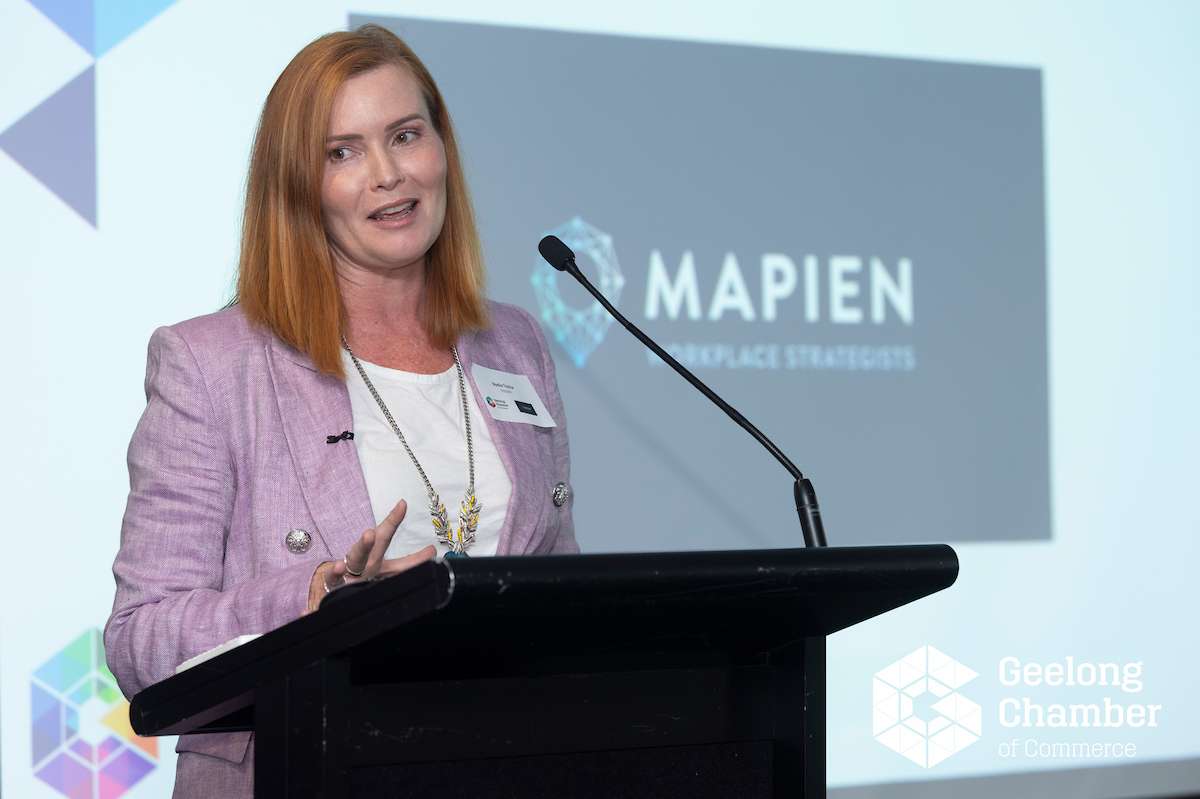

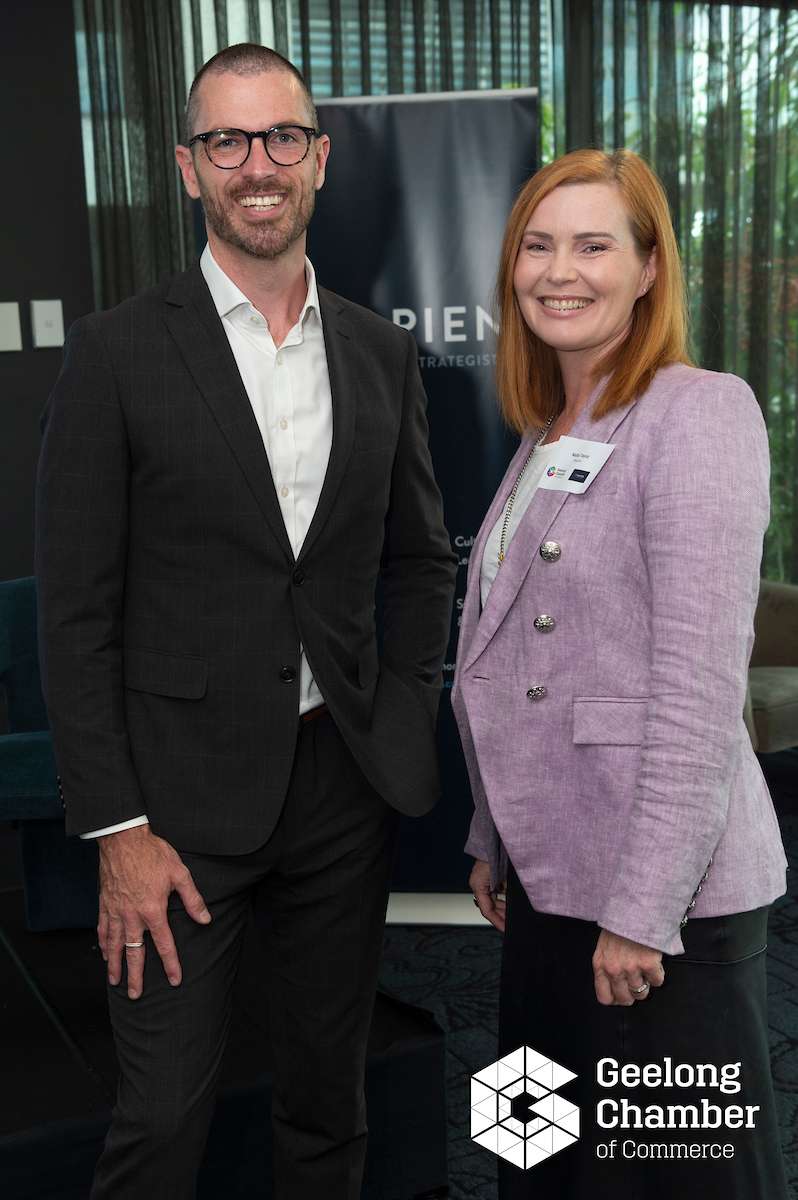
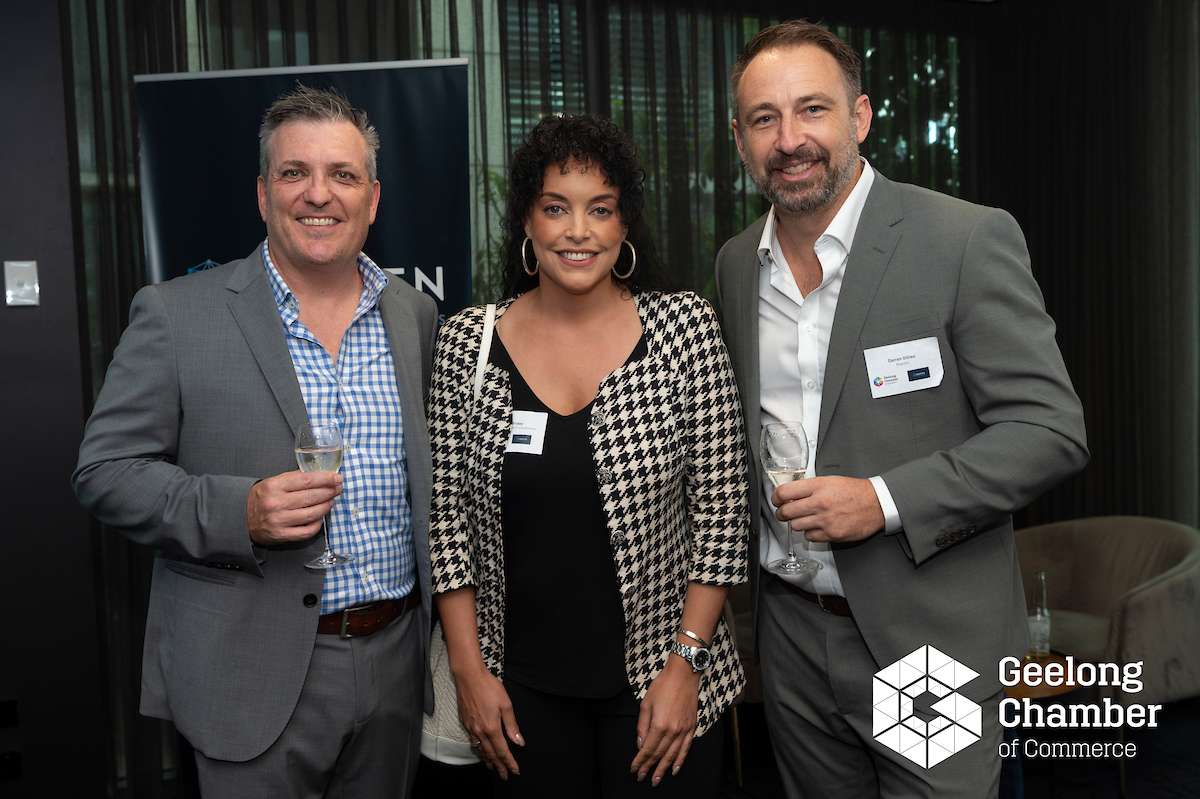
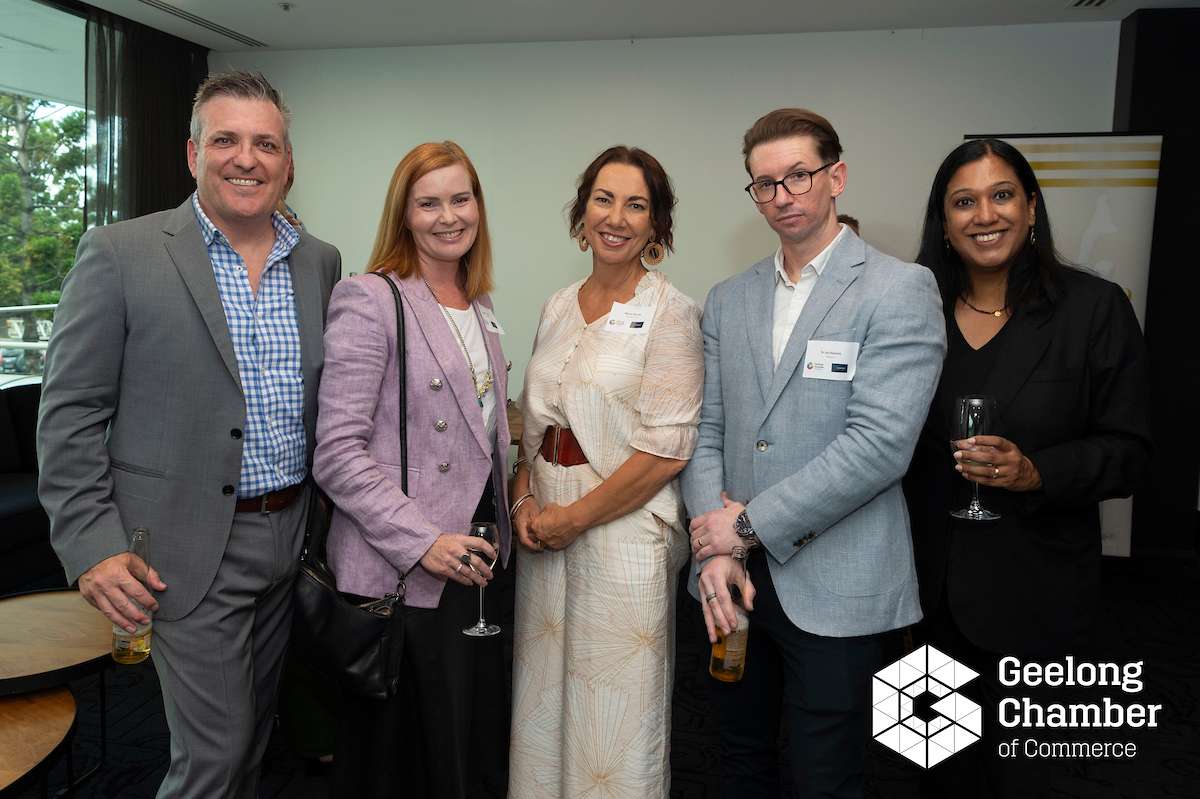
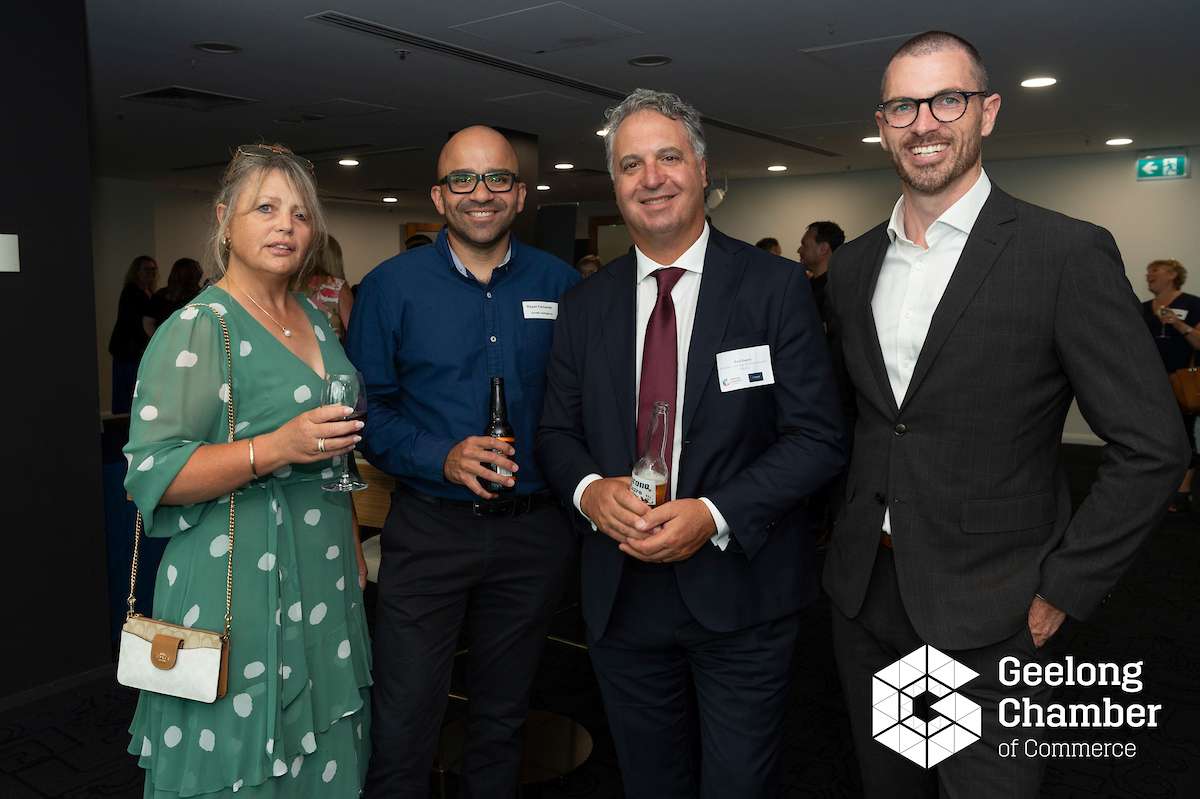
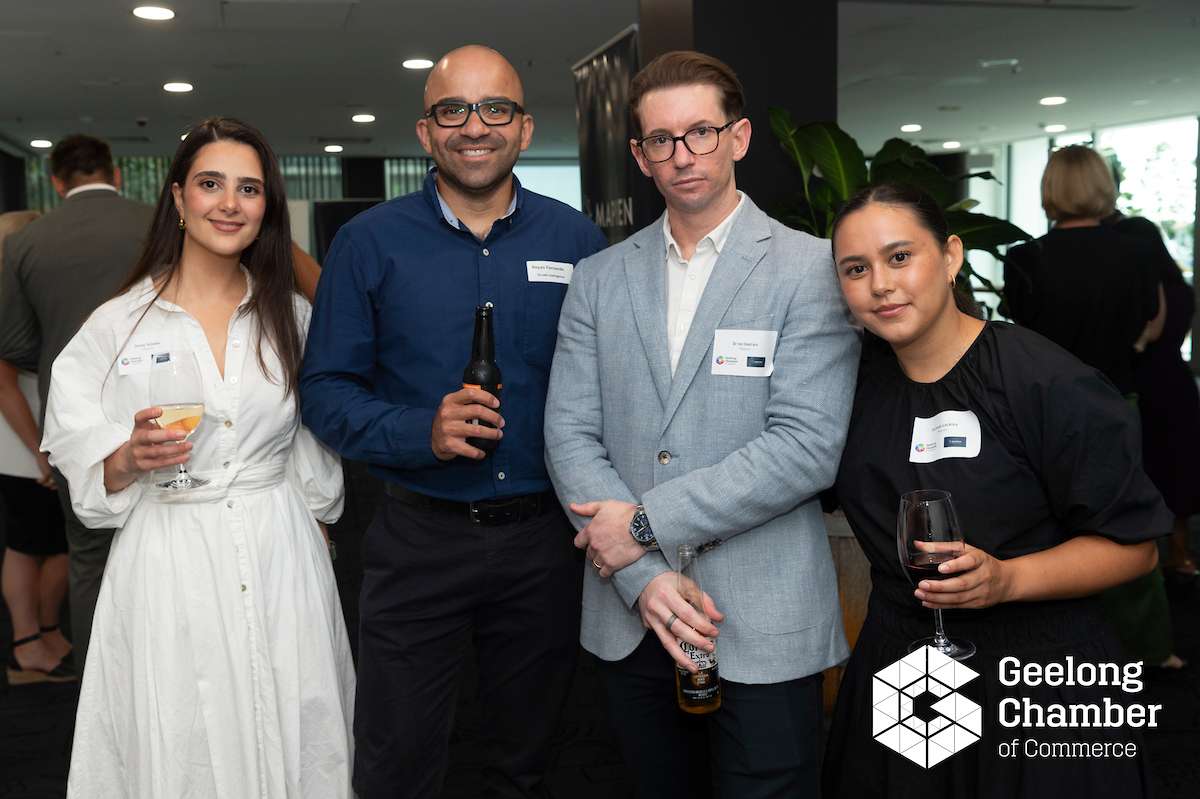

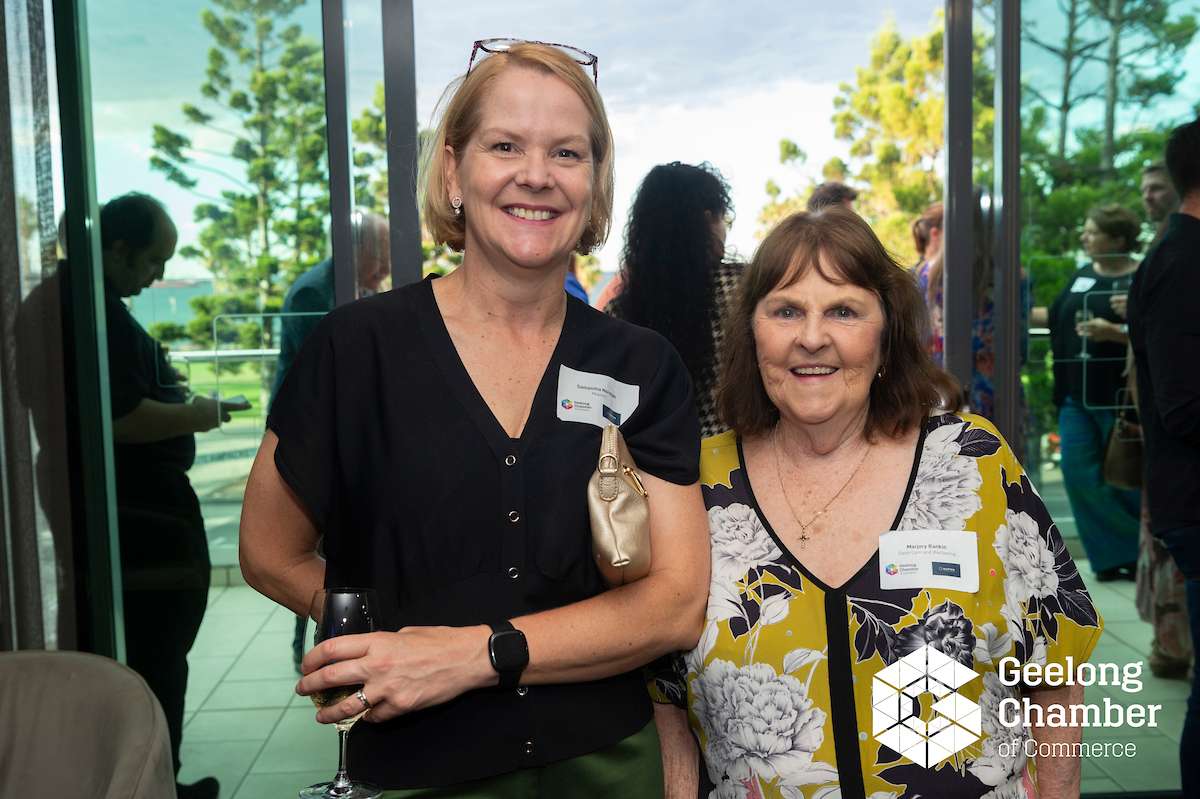



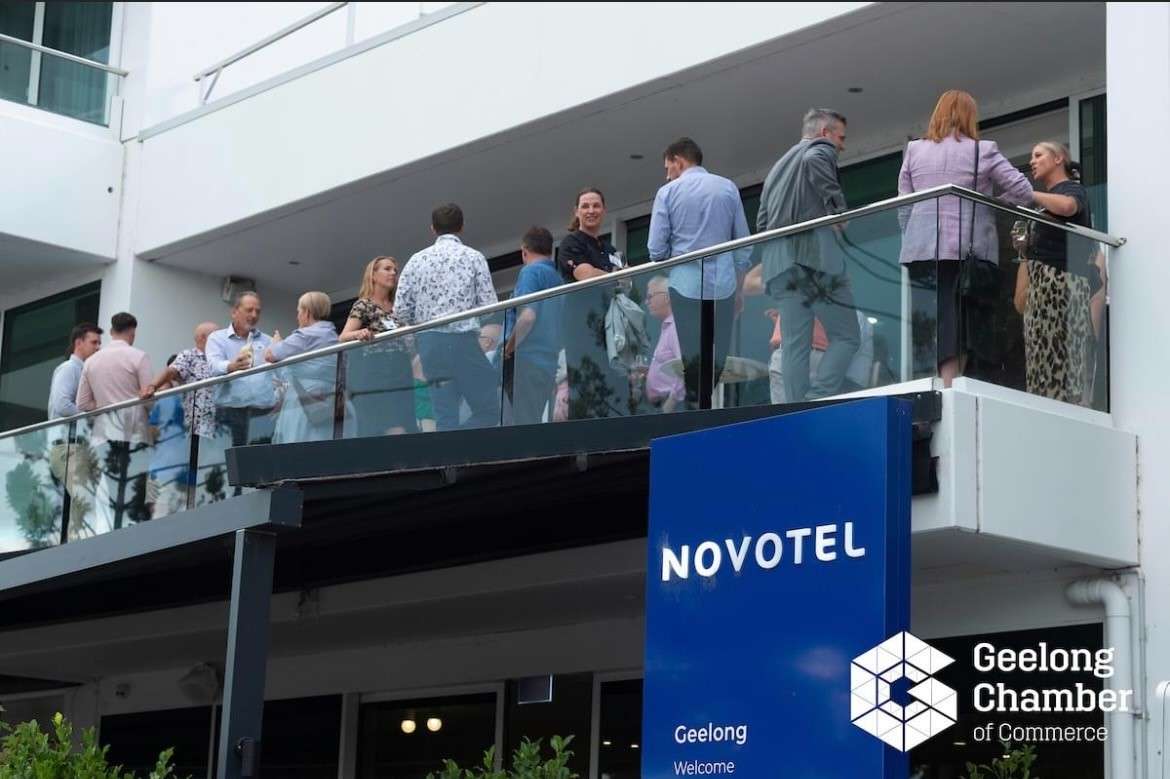
Thank you Geelong Chamber of Commerce and Novotel Geelong for a fantastic evening!
Connect with us!
If you would like to know more about Mapien’s services and how we can help you with your workplace people solutions, please contact us and we will be in touch within 24 hours.
The decision of Tracey Williams v Aurora Healthcare [2023] FWC 3030 provides a clear reminder about the principles for determining whether an employee’s termination of employment was a genuine redundancy in circumstances where they were competing with another employee for an available position.
The Facts
Tracey Williams (‘Applicant’) commenced employment with Aurora Healthcare (‘Respondent’) on 6 July 2021 as a Finance Manager. She was responsible for the Eden Private Hospital and Mackay Private Hospital. Mr Guha was employed by the Respondent as the Finance Manager for Townsville Hospital.
An operational restructure took place in May 2023 in response to economic pressures and rising costs following the COVID-19 pandemic. The Respondent identified that the two Finance Manager positions held by the Applicant and Mr Guha required a merger into a consolidated regional position. A consolidated Regional Finance Manager was created with responsibility for the Eden Private Hospital, Mackay Private Hospital and Townsville Private Hospital.
The Respondent used a standardised assessment against objective criteria in a selection matrix that was used for other employees whose positions were also identified for redundancy. The selection process included an assessment and rating of each impacted employee against standardised criteria of skills, performance, demonstration of values, potential to develop and progress, together with the requirements of the positions and their qualifications. The Respondent assessed and rated the Applicant and Mr Guha against these criteria and determined that Mr Guha was more suitable because his skills and capabilities were to the required standard.
Mr Guha was managing the Townsville Hospital to a higher standard, had multiple qualifications including a Bachelors and Masters degree in Commerce, and expressed a willingness to manage more hospitals. The Applicant who was managing two hospitals only wanted to manage one hospital which was inconsistent with the Respondent’s operational requirements of having a regional position with increased responsibilities. The Respondent made the decision to make the Applicant’s position redundant on 28 July 2023 with Mr Guha taking on the Regional Finance Manager position.
The Decision
The Applicant lodged an unfair dismissal application, and the Respondent raised a jurisdictional objection on the basis that the dismissal was a genuine redundancy. The Applicant submitted that her position was not genuinely redundant as Mr Guha required training in her former position. She stated that Mr Guha required access to many of her files and other resources she had used to undertake her role and that on one occasion following her dismissal Mr Guha asked her for assistance with a particular task.
The Fair Work Commission (‘FWC’) was required to determine 3 issues for the purpose of section 389 of the Fair Work Act 2009 (Cth).
Issue #1
The first issue was whether the Applicant’s employer no longer required the Applicant’s job to be performed by anyone else because of the operational requirements of the employer’s enterprise.
The FWC outlined that the relevant test is not whether the duties continue to be performed but whether the job continues to be performed (Kekeris v A. Hartrodt Australia Pty Ltd T/A a.hartrodt [2010] FWA 674). Therefore, as the duties continue to be performed, it was not inconsistent with a genuine redundancy for Mr Guha to ask the Applicant about her duties as these were now required to be performed by him alone. What mattered was whether the job the Applicant previously performed was no longer required.

The FWC noted that the Respondent provided clear and unambiguous evidence that it had conducted a broad and thorough review to identify cost savings and that 24 positions were deemed redundant as a result of the review. The Applicant’s role and Mr Guha’s role were redundant roles. A more senior role of Regional Finance Manager was created to replace the previous two Finance Manager roles. Both the Applicant and Mr Guha were considered for the more senior role. On this basis, the FWC concluded that the Respondent no longer required the Applicant’s job to be performed because of the operational requirements despite some of her duties existing in some form in the more senior role.
Issue #2
The second issue was whether the Applicant’s employer complied with any obligation in a modern award or enterprise agreement that applied to the employment to consult about the redundancy.
As there was no applicable modern award or enterprise agreement that applied to the Applicant, there was no requirement to consult about redundancy. Nevertheless, the Respondent did consult the Applicant about her position becoming redundant and there were no redeployment opportunities under an applicable modern award requiring the Respondent to offer a different position.
Issue #3
The third issue was whether it was reasonable in all the circumstances for the Applicant to be redeployed within the employer’s enterprise or the enterprise of an associated entity of the employer.
The Respondent submitted that the Applicant was not interested in redeployment and that there were no suitable alternative roles available at the time of her redundancy. It was noted that 23 out of 24 employees of the Respondent were also unable to be redeployed further evidencing that redeployment was not a viable option.
The Applicant submitted that the possibility of redeployment was discussed but most job vacancies were clinical and therefore unsuitable for her. The only available role was a Sunshine Coast Finance Manager role but the Applicant was not prepared to relocate due to family responsibilities. The FWC was satisfied that redeployment was not available to the Applicant and the Respondent had fulfilled its obligations.
The FWC concluded that the dismissal of the Applicant was a genuine redundancy for the purpose of section 389 of the FW Act and dismissed the application.

Key Takeaways
This decision is a reminder that it is the job that is made redundant and not the duties associated with the job. Therefore, where two jobs are made redundant and consolidated into one, the fact that the person in the consolidated job may ask questions or need some form of handover of duties does not negate the fact that a genuine redundancy occurred.
It is also an important reminder that objective criteria must be used when selecting one person over another for available positions within a new workforce structure. To do otherwise will bring the legitimacy of the restructure into question.
Connect with us!
If you would like to know more about redundancy, please contact us and a Mapien Workplace Strategist will be in touch within 24 hours.
Changes in wage theft legislation
The impending changes in wage theft legislation, known as Closing Loopholes No. 1 and No. 2, signal a significant shift in addressing employee entitlement underpayment.
Closing Loopholes No. 1 introduces a new criminal offense for wage theft, effective no earlier than January 1, 2025, or when the Fair Work Commission (FWC)’s Voluntary Small Business Wage Compliance Code begins.
Closing Loopholes No. 2 grants unions the ability to obtain an exemption certificate from the FWC, waiving the 24-hour notice for entry if underpayment is suspected. Recent amendments include an additional ‘guardrail’ – the FWC must ensure that giving advance notice would hinder effective investigations into underpayments before issuing a certificate.
These reforms substantially increase penalties for underpayment, marking the first time proportional penalties are introduced. Employers intentionally underpaying may face up to 10 years in prison and a maximum fine of $7.825 million or three times the underpaid amount (if it exceeds the cap).
What does it mean to Employers?
To successfully navigate these changes, proactive measures are crucial.
Employers should:
- Ensure timely identification and resolution of errors and conduct regular pay audits to closely monitor compliance.
- Establish a comprehensive procedure outlining roles, entitlements, rate calculations, procedures for ongoing audits, and a framework for rectification.
- Ensure accurate determination of entitlements by implementing a systematic process to identify the most appropriate Award or Agreement for each role and ensuring the correct Classification for every position is applied.
- Verify that annualised salaries cover minimum entitlements, including overtime, weekend work and public holiday work and conduct frequent reconciliations to ensure adherence to obligations.
- Regularly review and update payroll data and pay rules to capture regular changes to rates or benefits and to ensure accurate representation of employee entitlements.
Harsher penalties
The introduction of criminal penalties for wage theft is a landmark development in safeguarding workers’ rights. However, the real-world implications and how to navigate these changes remains the key challenge for Employers. The Closing Loopholes bill aims to address issues surrounding deliberate wage underpayments, but the effectiveness of these amendments is still a subject of speculation.
While these laws may not take effect until 2025, the true impacts of these legislative changes are yet to be fully realised, as employers grapple with interpretation and implementation. Initiating these steps now is imperative for creating and sustaining a culture of wage compliance. Proactive measures will not only ensure legal adherence but also foster a positive working environment and provide Employers the foundation on which to build their business with integrity.

Connect with us
If you would like to know more, please contact us and one of our Workplace Strategists will be in touch within 24 hours.
You may also like to read our recent article, for more information on the closing loopholes act
This is blog #6 in our series on coaching models. Sign up to our mailing list to make sure you don’t miss out on our future content.
Change is necessary for personal growth and development. But going from where you are now to where you want to be is easier said than done (see: all those New Year’s resolutions that died sometime in January).
As a leader, you’ve probably also noticed that it’s even harder to get someone else to make a change.
Fortunately, we have a tool for that. The Stages of Change Model can help you better understand how to support someone through a change, even when it seems like they’re going backwards (spoiler alert: that’s part of the process!).
So, let’s take a closer look about what it is and how you can apply it…
Introducing the Stages of Change Model
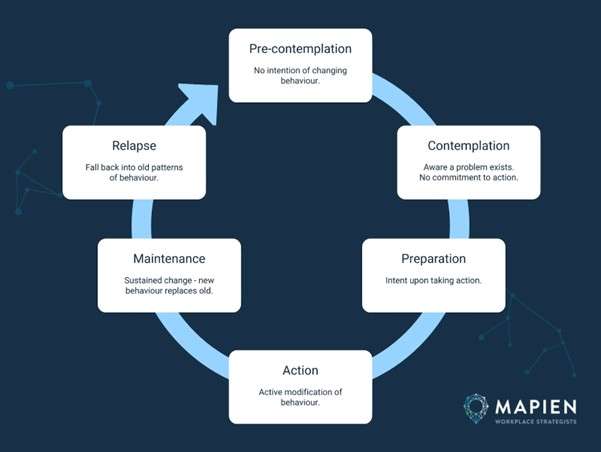
Quite simply, the Stages of Change Model helps you visualise the decision-making process a person goes through when preparing for or undergoing a change.
The six stages in the model range from pre-contemplation through to awareness, action, and maintaining sustained behavioural change. If a person relapses into their old patterns of behaviour, they can simply repeat the cycle again – but with new learnings that increase their likelihood of success.
The model demonstrates that:
- People don’t change their behaviours or attitudes quickly or easily
- You cannot force a change — people have to want to change
- Changes typically occur through a gradual and cyclical process
- Different strategies can be helpful at different stages
Origins of the Stages of Change
The Stages of Change Model is part of the Transtheoretical Model of Change – a theory used in therapy that can be used to understand behavioural change. This theory was developed from the late 1970s onwards by Professor of Psychology, James O. Prochaska and his colleague, Carlo Di Clemente.
Transtheoretical therapy has been clinically tested and proven effective in treating all sorts of health issues, from smoking and alcohol abuse to weight control, exercise, and preventative medical care.
Both transtheoretical therapy and the Stages of Change Model have remained both popular and influential over the decades.
The 6 Stages of Change
Each stage comes with different actions, challenges, and strategies that can support an individual through the change process.
1. Pre-Contemplation

When they are at the first stage of change, an individual isn’t usually aware of any issues with their behaviour or the situation. As such, they don’t yet intend to make any changes. Someone at this stage may also be in denial about their problematic behaviour, or believe that they can’t control their behaviour.
COACHING TIPS:
- Ask: Why do you think this change is needed?
- Ask: What are you risking if the situation doesn’t change?
- Discuss: Provide information and feedback that might help the person become aware of the problem.
2. Contemplation

When someone enters this stage, they are starting to think about making a change in the foreseeable future (within 6 months). This means they are probably recognising some of the positives associated with changing a situation or behaviour, but the negatives also weigh heavily. For instance, changing their behaviour might lead to temporary pain or disruption, it might be costly, or it might take up valuable time.
COACHING TIPS:
- Ask: What positives and negatives might come from making a change or not making it?
- Ask: What might prevent you from making a change?
- Motivate: Talk about the benefits of changing and any potential consequences if things were to remain in their current state.
3. Preparation

Once someone reaches the preparation stage, they are getting ready to make a change in the immediate future (within 30 days). In order to get ready for a bigger change, they might start experimenting and making progress with smaller changes. This might include booking a session with a coach, reading a book with relevant information, purchasing necessary products, or joining a community of other people who are on a similar path.
COACHING TIPS:
- Ask: Why are you motivated to make a change?
- Ask: What steps do you need to take to make a change?
- Plan and strategise: Work together to come up with change strategies they could try that would be realistic to implement, appropriate for the situation, and likely to be effective.
4. Action

Once they reach this point, a person is taking direct actions to achieve a change in their behaviour or situation. They intend to persist with the change, despite experiencing some challenges — and are likely experiencing some wins as a result (though these wins may not be enough for long-term, sustained action).
COACHING TIPS:
- Ask: What has been easy for you during this change? And what’s been difficult?
- Ask: What can you do to address the challenges that have come up?
- Practical Support: Help the person take steps towards making change. Provide reinforcement and encouragement to keep moving forward.
5. Maintenance

A person is considered to be in the maintenance stage when they have maintained the change in behaviour or situation for a reasonable amount of time (6 months is a good milestone) and intend to continue. Minor setbacks may occur, but overall, they avoid temptation and stay on track.
COACHING TIPS:
- Ask: What has helped you to maintain the changes you’ve made??
- Ask: What else can you do to maintain this change in case you experience setbacks in future?
- Proactive Support: Help them become aware of the possibility of relapse and identify strategies that will help them maintain their current progress.
6. Relapse

Finally, it’s important to understand that relapse is extremely common when making a change. Setbacks can occur that cause someone to go back to their previous negative behaviour or situation. Although they will likely feel frustrated and disappointed at relapsing, they should take the opportunity to learn about themselves, their triggers, and any barriers to success so that they can implement strategies to manage them in future.
COACHING TIPS:
- Ask: What do you believe triggered you and caused this relapse?
- Ask: What can you learn from this relapse? And what can you do to prevent future relapses?
- Reflect: Help them reflect on the situation and identify potential learnings, and guide them back to their original commitment and goal.
Completing the Cycle
Some interpretations of the model suggest that there is no end state or completion of the cycle. In this case, the goal is to simply remain in the maintenance stage, avoiding triggers and relapses as much as possible.
However, other interpretations are that once a person is successful with implementing the change, they may eventually reach an end state where the change is permanently embedded in their lifestyle or identity. This means that no triggers or temptations will cause them to relapse or return to their former state, and the cycle ends.
Neither interpretation is necessarily right or wrong — so coaches may wish to adopt the version that best fits the mindset of the individual they’re working with.
Starting with the Stages of Change
The Stages of Change Model is a valuable tool for coaches, therapists, and leaders to use in supporting others through a situational or behavioural change.
However, it does have one key limitation to bear in mind:
“People have to want to change.”
Even the most compelling information, careful coaching, and active support may not be enough. The individual must be prepared to commit to the change, as it will likely require both time and effort on their part.
In some situations, before you get started with the Stages of Change, it may be helpful to first employ a mix of other coaching methods and models, such as the GROW Coaching Model, the Circles of Control, Influence & Concern, and The Choice Point Method. These may provide further insights into behaviour or motivation that can help someone commit to making positive changes.
That said, assuming you’re coaching someone who is ready and willing to make a change, the Stages of Change Model is a practical tool to guide them along the way — increasing the chances of positive, long-term change.
Connect with us!
If you’re experiencing any personal changes or changes in the workplace, you (and potentially your team) could benefit from some extra support to work through them. Reach out to our team if you’d like support with leadership coaching and access to more tools like this one.
Practical Insights to unlock full potential
Mentoring programs are a dynamic development tool that aid personal and professional growth in a cost effective way, but harnessing its full power requires more than mere enthusiasm.
It’s often the simplest of obstacles which lead programs to falter. Small roadblocks in aligning schedules or working out what to talk about can lead mentors and mentees to hesitate, flounder and lose focus. Luckily these obstacles are easily solved with some simple upfront program design. Structured strategies, when embedded into mentoring programs, can solidify their success, and amplify the benefits for both mentors and mentees.
Here’s a deeper dive into five critical tactics to ensure an effective and impactful mentoring program.
1. Getting the right pairs
Mentoring thrives on the connection between a mentor and a mentee. Getting the pairing right sets the stage for a rewarding journey for both people.
A critical element of an effective mentoring relationship is a shared understanding and respect of each other’s expectations from the relationship. To minimise potential frustration for both parties arising from misunderstanding expectations and misalignment, the quality of initial matching can help.
Often approaches to pairing focus solely on aligning skills and development goals. While this can be useful, technical alignment alone may not suffice for a strong rapport and it can overlook other valuable points of matching. You might like to consider similarities in ethics, values or interests to encapsulate a more holistic view. A matching survey that captures these factors can also be used as a way to streamline the matching process.
Handy Hint: Mentors often contribute by sharing their own stories and interests. For example, a mentor may really appreciate “innovation” and how being open to new approaches has helped them in their career to grow their experience or skills. You could include “openness to new ideas” or “prefer conventional methods” in your survey questions to determine and tap into a mentor’s past experience; this insight can be advantageous for ensuring successful future pairings.
2. Preparing the Guide with Mentor Training
Mentors, despite their technical skills, professional experience and good intentions towards mentoring, may find the skills for mentoring effortful as they have limited experience with the skills that go into a great developmental conversation.
To uplift your mentors, you can offer mentor training sessions that explain the mentoring process by setting clear expectations early and equipping them with tools for effective conversation and connection.
Handy Hint: Provide a structured guide on goal setting for the mentor program. Helping someone outline their planned pathway can be different from charting your own course, and a structured approach can be invaluable in refining ideas and gaining the engagement of mentors and mentees alike.

3. Nurture the Mentee with an Orientation Session
Mentees may come with their own set of expectations. For example, they may expect a number of meetings, wish to cover certain topics or get specific skills guidance. Providing an informative orientation can align expectations with achievable reality, ensuring a smoother mentoring journey.
It is also useful to use the orientation to equip mentees with tools to communicate their expectations, desires, and concerns more effectively with their mentors.
Handy Hint: Formalise the expectation-setting phase by writing it down for both parties to view. An ‘expectations agreement’ signed by both parties can assist to establish commitment, clarity and provide a guide to refer back to when things are less clear.
4. Setting the Scene with a Boundary Management Plan
Each mentoring relationship is unique, and so are the boundaries within them. It’s vital that each relationship establishes between themselves what’s acceptable and what’s not. You may however like to set some guidelines about a preferred communication channel, frequency of meetings, time or location of meetups, and mentor/mentee responsibilities. Such program driven guidelines act as a sort of template to instigate clear boundary setting conversations.
Additionally, ensure that both parties know the steps to take if a boundary is unintentionally crossed.
Handy Hint: Encourage the mentor and mentee to address boundary issues amongst themselves before escalating. For example, what to do if a meeting is cancelled or postponed or how to move past different views. Offer a structured conversation framework to aid them in addressing and resolving any breaches.
5. Break the Ice by Scheduling the First Check-in
Surprisingly missed connections is due to confusion in communication. The initial phase is critical. A missed or delayed first meeting can set a precedent for the rest of the relationship.
Actively facilitate the first interaction to ensure it occurs seamlessly. Perhaps the mentoring organiser may want to setup the meeting for the mentor and mentee so it’s in their calendar to avoid confusion and request they discuss and book in the next session at the end. This launch sets the tone for future interactions and collaboration.
Handy Hint: Prioritise action and a more personal first interaction, be it a face-to-face meeting, a video call, or even a phone conversation. Avoid impersonal mediums like emails or texts and take a personalised approach to make a good first impression.

The Key to a Successful Mentoring Program
The effectiveness of a mentoring program hinges on its well-designed structure and the proactive steps taken to overcome potential challenges. When these strategies are skilfully executed, they can significantly elevate the experience for all participants, fostering growth, professional development, and a culture of mutual respect.
You can read more about how mentoring can significantly elevate your career and organisational culture, in our first mentoring blog: Unleashing Potential: The Transformative Power of Mentoring in the Workplace
Connect with us
To chat further about mentoring programs, or coaching programs, and building a coaching culture, please reach out to us on hello@mapien.com.au
A message from Nadia Taylor, Mapien CEO
At Mapien we’re proud of our growth and success as a business and our team’s dedication to our clients and commitment to continuous improvement. With the expansion in the breadth of our services and geographical reach, we recognise the need to reassess our organisational structure to support our national approach, reinforce quality assurance practices, and enable us to continue to grow into the future.
We have redesigned our service structure to enhance our focus on our core strength – our multi-disciplinary approach!
Our new service structure allows us to seamlessly integrate our diverse expertise across our key service areas:
- Industrial Relations
- Workplace Strategy
- Workplace Psychology
- Immigration
By leveraging our significant expertise in these critical areas, we are committed to providing a comprehensive multi-disciplinary approach to give you the best possible people solutions that align with your unique needs and contribute to your organisational success.
Business as usual
For our Mapien clients, it’s business as usual, your key contacts, access to our services and our unwavering dedication to excellence in service delivery will be unchanged.
Whilst we have transformed our internal service structure to accommodate our strategic vision and growth – you can expect the same bespoke service from our experts. We’re excited for our future as we continue to give both our clients and our people, the freedom to shine!
Congratulations
We’re excited to celebrate our new appointments and Mapien promotions. Click here to read our full list of appointments and stay tuned for our team spotlight series on LinkedIn!

Connect with us
To learn more or for support with any of your people needs, please contact us today!
There is more than meets the eye when it comes to organisational values.
Often considered as lofty ideals or the icing on the cake, organisational values are much more, they are the bedrock of an organisation. Organisational values not only set the tone for the whole organisation, but they also provide a way to execute strategic direction and most importantly, guide its people.
Organisational values refer to unspoken and broad qualities that guide the behaviours of individuals at work (Chatman, 1989). They are collective beliefs about what the entire organisation stands for, takes pride in, and holds of value (Schein, 1985).
Values comprise of four aspects:
1. They are concepts or beliefs
- going beyond mere words and embodies what an organisation stands for.
2. They contribute to desirable behaviours that rise above specific situations
- help steer the actions of individuals and groups.
3. They guide selection or evaluation of behaviour and events
- serve as a compass
4. Are ordered by relative importance
- help to convey what’s most important to you and your organisation.
Imagine values much like a lighthouse, guiding us through calm and treacherous waters. With the organisation as the ship and the crew as the employees, values help guide where we are, where we need to be, and where not to be. If the captain of ship is not on the same page as the rest of the crew, the ship risks not reaching its destination.
Just like ships and their crew, values must be aligned across the organisation to function optimally. Values help bind an organisation together, thus producing a culture conducive of working towards a common goal (Fitzgerald & Desjardins, 2004).
Research suggests that among many benefits, organisations that develop a culture where values are shared deepen the level of employee-organisation integration and improve organisational commitment (the degree that employees like their organisation) (Agarwal & Sagar, 2012).

With organisations that exude high organisation commitment experiencing reduced turnover and absenteeism, improved job satisfaction and employee citizenship behaviours (defined as ‘going the extra mile’), value alignment is a great place to start for aspiring high performing organisations (Fitzgerald & Desjardins, 2004).
The relationship between organisational values, organisational commitment and outcomes can be seen in the diagram below:
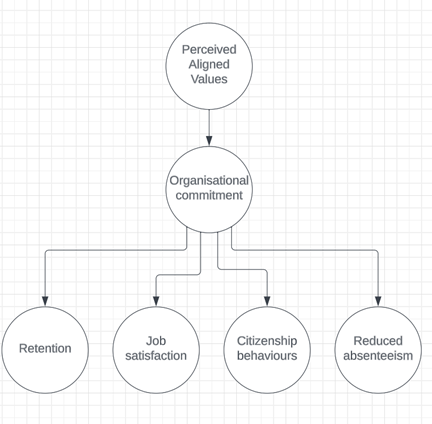
Tips for Organisations on Cultivating Values
Living and breathing values throughout the entire organisation is no small feat, requiring continuous effort and nurturing from both managers and employees. What is clear, however, is that managers who don’t take values into account are less effective than managers that do take values into account (Argandoña, 2003).
Organisations of all sizes can reap the benefits of organisational values by:
- When selecting values, listen to what’s important to employees about their work. Values should be genuinely held by all members of the organisation.
- Aim for values that are underpinned by benevolence (welfare of people), self-direction (independence and autonomy) and universalism (understanding and appreciation for the welfare of all people)
- Keep organisational values front of mind when considering long-term strategies.
- Ensure supervisors are practicing what they preach (when employees and their immediate supervisor’s values are congruent, outcomes such as job satisfaction and organisational commitment are supercharged) (Fitzgerald & Desjardins, 2004).
- Use organisational values to shape distinctive competencies you would like to see in employees
- Clearly define, describe and use organisational values in all decision-making processes.
Learn more
If you would like to know more, please contact us and one of our Workplace Strategists will be in touch within 24 hours.
References
Allen, N. J., & Meyer, J. P. (1996). Affective, continuance, and normative commitment to the organization: An examination of construct validity. Journal of vocational behavior, 49(3), 252-276.
Agarwal P., & Sagar, P. (2012). The impact of person–organization value congruence on organizational commitment in a public sector organization. International Journal of Research in Commerce & Management, 3(9).
Argandoña, A. (2003). Fostering values in organizations. Journal of Business Ethics, 45, 15-28.
Chatman, J. A. (1989). Improving interactional organizational research: A model of person-organization fit. Academy of management Review, 14(3), 333-349.
Fitzgerald, G. A., & Desjardins, N. M. (2004). Organizational values and their relation to organizational performance outcomes. Atlantic Journal of Communication, 12(3), 121-145.
Schein, E. H. (1994). Innovative cultures and organizations. Information technology and the corporation of the 1990s: Research studies, 125-146.
The amendments made by the Fair Work Legislation Amendment (Protecting Worker Entitlements) Act 2023 (‘PWE Act’) to the Fair Work Act 2009 (Cth) (‘FW Act’) are now in full force.
The PWE Act was assented to on 30 June 2023 with a range of amendments coming into force from 1 July 2023 to 1 January 2024. This article outlines the changes and respective dates of operation.
From 1 July 2023, the changes are as follows:
Protection for Migrant Workers
It has been made clear that a breach of the Migration Act 1958 (Cth) or an instrument made under it will not affect the validity of an employment contract or a contract for services for the purpose of the FW Act.
This amendment ensures that migrant workers including temporary migrant workers working in Australia are entitled to the benefit of the FW Act regardless of their immigration status.
Unpaid Parental Leave
Flexible unpaid parental leave is already an entitlement under the National Employment Standards (‘NES’) of the FW Act.
These amendments increase the portion of flexible unpaid parental leave that may be taken from 30 to 100 days (or a higher number prescribed by regulation). Flexible unpaid parental leave can also be taken before, as well as after, a period of continuous unpaid parental leave.
In particular, the amendments:
- Allow employees to commence unpaid parental leave at any time in the 24 months following the birth or placement of their child;
- Remove barriers preventing couples from taking unpaid parental leave at the same time;
- Allows pregnant employees to access flexible unpaid parental leave in the 6 weeks prior to the expected birth of their child;
- Allows parents to request an extension to their period of unpaid parental leave regardless of the amount of leave the other parent has taken.
No Contravention of Modern Award if Electing to Pay SGC
The FW Act already requires a modern award to contain a term requiring an employer to make contributions to a superannuation fund for the benefit of an employee covered by a modern award in order to avoid liability to pay a Superannuation Guarantee Charge (‘SGC’).
This amendment clarifies that an employer will not contravene this term by electing to pay the SGC with respect to the employee, which the employer is entitled to do so pursuant to the Superannuation Guarantee Charge Act 1992 (Cth).
Workplace Determinations – Enterprise Agreements
It has been clarified that an enterprise agreement ceases to apply when it is replaced by a workplace determination. Workplace determinations generally operate and interact with other industrial instruments as if these were enterprise agreements with some exceptions.
The amendments provide for a specific interaction rule between a workplace determination and an earlier enterprise agreement.
From 30 December 2023, the changes are as follows:
Employee Authorised Deductions
There has been an extension to the circumstances in which employees can authorize employers to make valid deductions from payments due to employees. However, this is only where the deductions are principally for the employee’s benefit. An employee is permitted to give a written authorization to an employer to make regular deductions for amounts that vary from time to time provided the deductions are not for the direct or indirect benefit of the employer. This is to accommodate instances where for example, there are fee changes for a specified deduction. Previously employees had to provide employers with a new written authority on each occasion the amount of an authorized deduction varied.
From 1 January 2024, the changes are as follows:
NES – Superannuation Contributions
Superannuation contributions has become a new entitlement under the NES of the FW Act. The amendments require employers to make contributions to an employee’s superannuation fund to avoid liability under the Superannuation Guarantee Charge Act 1992 (Cth). An employer who contravenes this entitlement may be subject to a civil penalty and court orders including compensation.
Coal Mining Long Service Leave Scheme
These amendments affect the coal mining long service leave scheme to ensure that casual employees are treated no less favourably than permanent employees. The changes clarify that a casual employee’s long service leave entitlement must include a casual loading (where it applies) and expands the meaning of qualifying service to include certain weeks where a casual employee does not work due to specific rostering arrangements.

Key Takeaways
For most private sector employers these amendments will not be as onerous when compared with other FW Act amendments currently in operation. Nevertheless, it is important to be mindful of these changes.
Connect with us
If you would like to know more about these legislative changes, please contact us and a Mapien Workplace Strategist will be in touch ASAP.
30 year anniversary!
The 18th January 2024 marks an extraordinary milestone in the history of Mapien, as we celebrate a remarkable 30 years of dedicated service and outstanding leadership both within our organisation and in the industrial relations community for Alex Aspromourgos.
Three decades ago, after starting his career as a solicitor, Alex joined the then Livingstones, under the guidance of the organisation’s founder Roly Livingstone & industry icon Laurie Moloney.
With a determination to give unwavering service to his clients and colleagues and a commitment to excellence that has left an undeniable mark on our business, our employees and the clients he serves, Alex rapidly built an enviable reputation in the IR industry nationally.
Embodying the essence of our core values, Alex has played a pivotal role in shaping the trajectory of Mapien, with his relentless focus on excellence in service delivery, practical client solutions and the development and capability uplift of our consultants.
Whether you have directly collaborated with Alex within his team or sought his matter-of-fact counsel for resolving challenges, the resultant benefits generate insights that contribute to both individual and organisational growth.
Beyond Mapien, Alex’s influence extends across various organisations and industries where his previous mentees have become leaders and specialists in their field making a significant impact, and upholding the standards of excellence he has set.

Alex’s loyalty to our clients, his ability to distil complex matters into practical solutions and guidance, and his calm and unflappable demeanour in navigating intricate problems has become a source of inspiration for all who have had the privilege of working with him.
Through his steadfast commitment, unwavering leadership, insightful guidance and dedication to his discipline Alex has guided our clients with a trusted hand earning their loyalty, respect and confidence.

Congratulations on reaching this incredible milestone Alex, and here’s to the next chapter of your success and accomplishments.
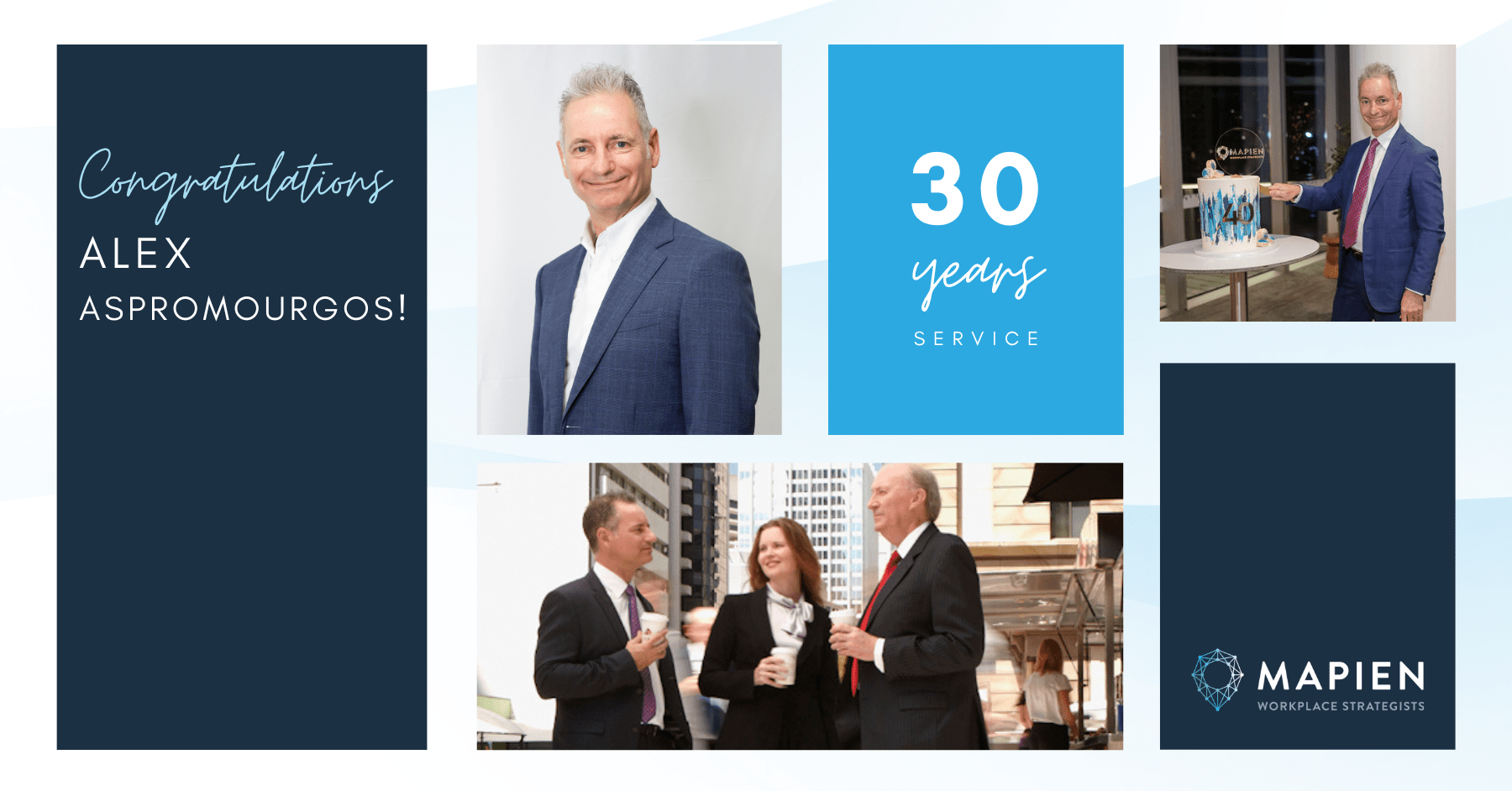
This is blog #5 in our series on coaching models. Sign up to our mailing list to make sure you don’t miss out on our future content.
Do you consider yourself a flexible leader? Or want to become more flexible and responsive to the situation or the individuals you’re in charge of?
Good leadership doesn’t require ‘the best’ leadership style — there’s no such thing. In some situations, good leadership looks like coaching or supporting, while in other situations, a good leader will need to delegate or even direct people on what to do.
The best leadership style will always depend on the situation, and the most effective leaders are those that can quickly adapt their approach.
Some leaders do this quite naturally — with the social intelligence to respond to changing environments and situations around them. But many also benefit from a methodical approach that helps them analyse situations and understand when to apply different leadership styles. And that’s where the Situational Leadership Model comes in.
What is the Situational Leadership Model?

The Situational Leadership Model is based on a theory developed by Dr. Paul Hersey and Dr. Ken Blanchard, as part of their textbook, Management of Organizational Behavior (1969).
The model is designed to help leaders identify the most beneficial leadership style (with an appropriate level of support and direction), based on a careful consideration of a team or individual’s competence and confidence with a task or situation. In summary, it:
- Defines four overarching leadership styles
- Classifies four levels of follower readiness
- Allows for a quick analysis of the situation
- Points towards the most appropriate leadership approach
The idea is that there’s no perfect leadership style, but that effective leaders should adapt and respond to the task or situation at hand, and the individual or group that they need to influence.
So, let’s break down the different components of the model…
Levels of Follower Readiness
Follower readiness levels range from low to high, depending on the person or group’s level of knowledge, skills, willingness, or confidence.
1. LOW: Unable/ Insecure/ Unwilling: Limited knowledge, skills, willingness, and/or confidence to work on their own.
2. MEDIUM: Unable/ Confident/ Willing: Willing to do the task, but limited skills to complete it.
3. MEDIUM: Able/ Insecure/ Unwilling: Able to do the task, but either insecure or unwilling to complete it.
4. HIGH: Able/ Confident/ Willing: Able, confident, and willing to do the task successfully and take responsibility for it.
It’s important to be aware that follower readiness will change, depending on the situation — from moment to moment and from one task to another.
Situational Leadership Styles
You may need to switch between each of the following leadership styles, depending on the situation that comes up — and the teams and individuals you need to manage.
High Task/Low Relationship: Directing or Telling
When team members are inexperienced and/or they lack commitment to a specific task, you’ll likely need to take a more directional style of leadership. This involves providing specific instructions, telling team members what to do and how to do it, and closely supervising performance.
High Task/High Relationship: Coaching or Selling
When team members are interested or enthusiastic about a task but lack the necessary skills, you can apply a coaching or guiding leadership style. You would provide directions, explain your decisions, and give opportunities for clarification. This approach includes more two-way communication and socio-emotional support, and should lead to more buy-in from team members.
Low Task/High Relationship: Supporting or Participating
When team members have the skills they need to complete a task but lack confidence or motivation, a supporting or participating leadership style can be helpful. This involves providing less clear direction to team members, but working closely with them to share ideas, solve problems, and facilitate making decisions.
Low Task/Low Relationship: Delegating
When team members have the skills, confidence, and motivation to complete a task, delegation is the most appropriate leadership style. This is considered a more passive, hands-off approach. It involves deferring most of the responsibility for decisions and implementation to the team, and instead monitoring their progress.
Three Steps to Apply the Situational Leadership Model
You can print or recreate the following worksheets to go through the process and fill out your own Situational Leadership Model.
1: Reflection
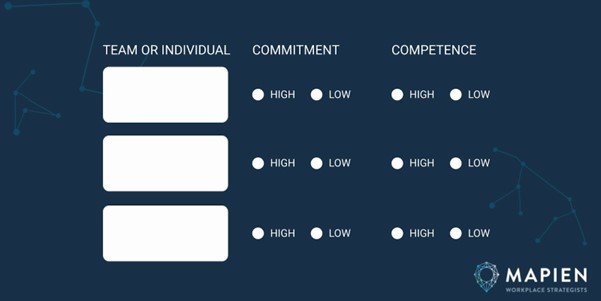
Start by reflecting on the team or person you are leading within a given context. Consider their overall level of commitment and competence in the situation — as this will dictate your leadership style.
2: Matrix
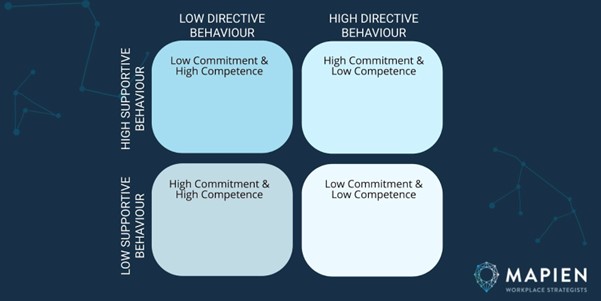
Use the matrix to plot the location of each team or person identified in step 1, based on their level of commitment and competence. Then refer to the labels on each axis to identify the level of direction and socio-emotional support you may need to provide as a leader.
3: Actions

Finally, based on the leadership styles you identified in step 2, note down some actions you can take that will support the performance of each team or individual.
For example, you might decide to take a more hands-on approach with one team, and work alongside another team. You might take more of a coaching role with one of your employees that needs some direction, but then delegate a specific task to another individual that’s ready to take responsibility for it.
Get Started with Flexible Leadership
“An effective leader is a flexible leader.”
Flexibility is key to effective leadership — not only to keep up with the pace of change in business, but to ensure you can respond to the changing situations and needs of the people around you.
After all, if your leadership style does not match your team’s readiness for the task, there’s likely to be a disconnect. A hands-off approach with a team that’s not equipped for the task is a recipe for disaster. And telling your most experienced employees what to do and how to do their job would be equally unwise.
That said, the Situational Leadership Model is really just a starting point for determining your behaviour as a leader. Successful leadership requires many other components, such as listening, communicating, and feedback. There are also many other coaching models that can be valuable for leaders — some of which we’ve already covered in this series:
Connect with us!
We’ll be back with more leadership and coaching models soon, as we continue this series. In the meantime, if you’d like more personalised support with leadership coaching or more tools like this one, start the conversation with our team today.
The pace of change in employment laws in 2023 was remarkable and the most significant in over a decade. Given the impact on employers and employees, having contemporary contracts of employment is not only a compliance issue and good business practice but it is a valuable investment in maintaining good workplace relations.
So, what are some of the reasons why you should be reviewing your contracts heading into 2024?
1. Pay Secrecy Terms
The Pay Secrecy legislation that came into effect on 7 December 2022 prohibited employers from including pay secrecy terms in new contracts of employment and prohibited employers from enforcing contracts that included pay secrecy terms in existing employment contracts.
From 7 June 2023, pay secrecy terms could no longer be included in employment contracts at all, including those contracts agreed to before 7 December, 2022.
If you have not updated your contracts to remove any reference to pay secrecy terms then now is a good time to do so because employers who have employment contracts that still contain pay secrecy clauses are exposed to significant penalties.
2. Fixed-Term Contracts
New limitations on fixed term contracts came into effect on 6 December 2023, under the Fair Work Legislation Amendment (Secure Jobs, Better Pay) Act 2022.
To comply with new laws have you:
- reviewed your fixed term contracts of employment and identified those employees currently on fixed term contracts to determine how they are impacted by the new requirements or whether they are exempt from the limitations due to one of the prescribed exemptions?;
- converted fixed term contract employees to permanent contracts where their fixed term has expired or is about to expire?; and
- begun issuing the new Fixed Term Contract Information Statement for fixed term contract employees, the new Fair Work Information Statement to permanent full time and permanent part time employees and the new Casual Employment Information Statement for casual employees?
If not, complying with the new fixed term contracts legislation is another good reason for reviewing all your contracts of employment.
3. Workplace Surveillance
As companies continue to adapt to flexible working arrangements there is an increasing reliance on workplace surveillance and employee monitoring. Now more than ever companies are using advanced monitoring technologies such as video surveillance, computer tracking, telephone and email monitoring and GPS tracking.
Companies can monitor their employees where it is reasonable and necessary to protect legitimate business interests which include measuring productivity, protecting intellectual property and sensitive business information, promoting cybersecurity and detecting theft, but these legitimate actions must comply with laws which afford employees certain rights regarding privacy.

- Any data collected by an employer through the surveillance of employees is considered personal information and employers have a number of obligations regarding the treatment of personal information of employees but what must come before surveillance begins is employee consent and notifying employees that there is surveillance in their workplace.
- Notification of surveillance can be achieved through clear policies, or workplace agreements but by having a workplace surveillance clause in your employment contracts, consent is secured and on record, so perhaps consider updating your contracts to include a Workplace Surveillance clause.
4. Post Employment Restrictive Covenants
Non-Compete and Non-Solicitation clauses are a common feature in many contracts of employment but a poorly constructed and poorly written covenant is highly likely to be unenforceable.
With post-employment restrictive covenants, each restraint must restrict an employee no more than reasonably necessary to protect the legitimate business interest of the employer and what is reasonable, will be fact, jurisdiction and time specific. The reasonableness of Non-Compete and Non-Solicitation clauses will need to consider amongst other things:
- the type of business or industry the employer operates in;
- the work duties performed by the employee;
- the seniority of the employee;
- the level of employee knowledge of company information;
- the nature of the relationships the employee had with colleagues and clients;
- whether the company has a gardening leave policy or clause in its contracts;
- the likely impact of a breach of a restraint on a business interest;
- the duration of the restraint period; and
- the geographical restraint area.
If you intend to review the Non-Compete and Non-Solicitation clauses in your contracts don’t forget to take a look at those employees who have had a change in their circumstance, such as promotion or a move to a new function, as they may need a different restrictive covenant.
5. Wage Theft Laws
The proliferation of underpayment of wages cases in recent years, resulting in multiple high-profile companies entering into Enforceable Undertakings with the Fair Work Ombudsman, along with Wage Theft Laws being introduced into Victoria and Queensland in recent years, has been reinforced by the Federal Government’s Fair Work Legislation Amendment (Closing Loopholes) Act 2023.

From 1 January 2025, new wage theft provisions will criminalise intentional wage underpayments and a failure to pay superannuation. Penalties for such offences may include up to 10 years imprisonment and/or fines of up to $1,565,000.00 for individuals or up to $7,825,000.00 for companies.
Given the new laws on wage theft now is the time to check that your contracts of employment:
- Identify the relevant industrial instrument and the appropriate Modern Award;
- Identify the relevant Job Classification and Level in any Award;
- Contain Set Off clauses that are appropriately drafted for salaried employees; and
- Comply with all obligations in relation to minimum rates of pay, National Employee Standards and Superannuation Legislation.
Connect with us
If you would like assistance in drafting or reviewing your contracts of employment please contact us and one of our Workplace Strategists will be in touch within 24 hours.
The Workplace Gender Equality Agency (WGEA) has introduced significant changes to its reporting requirements for the period covering 1 April 2023 to 31 March 2024.
These changes aim to provide a more comprehensive understanding of gender-related dynamics within organisations and align with recent legislative reforms.
Important for Employers to understand, is that these changes bring with it considerable increased requirements associated with the development of the report and the provision of Employee data.
Reports must be submitted between 1 April, 2024 and 31 May, 2024 and below are the changes that apply to the fast approaching reporting period:
New mandatory requirements (questions that were previously voluntary)
- Year of birth: Employers must now report the year of birth for each employee in their Workplace Profile.
- Primary workplace location (Postcode): Employers are required to provide the postcode of an employee’s primary workplace location.
- Remuneration reporting: Reporting on the remuneration of the CEO or equivalent, Heads of Business, and casually employed managers is now mandatory.
- Sexual harassment, harassment on the ground of sex or discrimination: Employers will need to report on preventative and accountability measures. This includes information about the frequency of leadership review of policies/strategies; training on sexual harassment; expectations communicated to employees about workplace conduct; workplace health and safety risk management process; supports for employees; and reporting and data collection processes on sexual harassment.
- Term limits for the governing body: Employers will need to report whether they have set term limits for Chairs and/or Members of the governing body.
- Targets to address gender equality: Employers will be asked if they set certain targets on gender equality in the Questionnaire.
New mandatory question
- Employers with access to employer-funded parental leave: Employers will need to provide information on whether permanent, contract/fixed term, and/or casual employees have access to employer-funded paid parental leave.

New voluntary question
- Paid family and domestic violence leave: Employers will be asked voluntary questions about employees taking paid family and domestic violence leave. Information collected will inform the government about the utilisation of this leave in the context of the new entitlement under the Fair Work Act 2009.
These changes in WGEA’s reporting requirements for 2023-24 reflect a commitment to advancing gender equality in Australian workplaces. Employers are encouraged to familiarise themselves with these adjustments, ensuring compliance and contributing to the collective effort to create more inclusive and equitable work environments.
What action do Employers need to take?
It’s important for Employers, who employ over 100 Employees, to understand their reporting obligations, to start planning their report now and to report accurately and in accordance with the required deadlines.
A failure to report, or report accurately, can find Employers in difficult situations including:
- Organisation being named in Parliament;
- Organisations being publicly listed as ‘non-compliant’; and
- Can result in the organisation being ineligible to tender for some Government work and tenders.
Connect with us
Need prompt and practical advice? Please contact us and one of our Workplace Strategists will be in touch within 24 hours.
Congratulations to Mapien’s Melissa Moulton whose pursuit of excellence, wonderful client support and dedication to creating people impact sees her promoted to Principal Consultant in 2024!
Congratulations Melissa
Melissa has built her career around helping employers navigate the complexities of employee relations matters. Her collaborative style, combined with her exceptional understanding of the Industrial Relations landscape, see her provide the best possible solutions to her client’s people challenges.

Connect with us
Our people are committed to enabling the success of organisations through their people. Reach out today to learn more about Mapien’s services and how our amazing Workplace Strategists like Melissa, can help you in 2024!
Announcement: Mapien Perth are on the move!
It’s been a busy start to the year for our Perth team, who are excited to soon make the move to our spectacular new premises on St Georges Terrace, Perth CBD.
Our team toured their new space in December and can’t wait to share it with you all in February!
Our new, state of the art office is the perfect environment for our growing team, reflecting our business, its values and future direction, and facilitating Mapien’s way of working.

Stay tuned for details
We’ve said a fond farewell to our West Perth offices and our team are working from home throughout January. It’s business per usual, so please reach out to the team for any of your people needs, and we can’t wait to share our bespoke space and exciting future with you in February.

